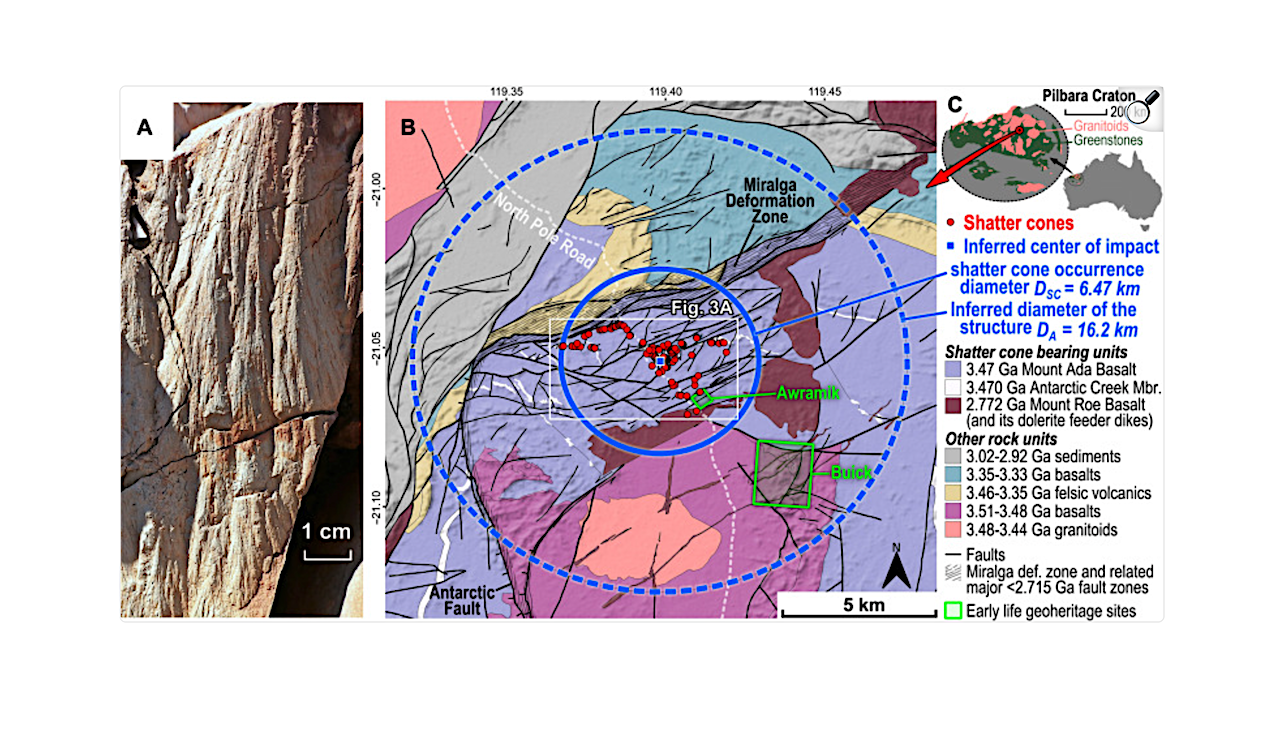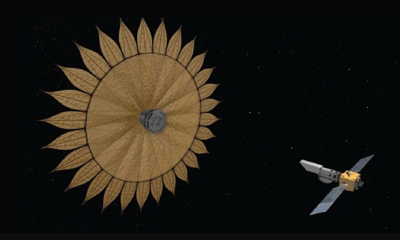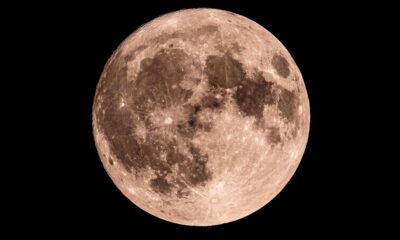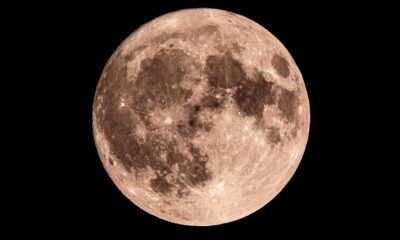Science
Researchers Unveil Ancient Meteorite Impact at Miralga Structure

A significant geological discovery has been made at the North Pole Dome in the Pilbara Craton, Western Australia, revealing the presence of an ancient meteorite impact structure known as the Miralga impact structure. Researchers have identified shatter cones in rocks dating back approximately 3.47 billion years, confirming that this site holds unique geological analogs relevant to both early Earth and Mars.
Initial findings suggested that the meteorite impact occurred around 3.47 billion years ago and created a crater of at least 100 kilometers in diameter. However, further analysis indicates that these estimates are not accurate. The shatter cones, which are formations resulting from high-pressure events like meteorite impacts, are spread over an area with a diameter of 6.5 kilometers and define a structure that is approximately 16 kilometers wide. This new evidence suggests that the impact event actually took place after 2.7 billion years ago.
Uncovering Geological Significance
The research team, which includes scientists from Harvard University, has made a groundbreaking discovery with the identification of the first shocked mineral from this location: the high-pressure titanium dioxide polymorph known as TiO2-II or srilankite. The presence of shatter cones in both the Mount Roe Basalt and the Mount Ada Basalt indicates that the impact must have occurred post-deformation, thus providing a maximum age of less than 2.7 billion years for the event.
These findings enhance the scientific understanding of impact processes on planetary bodies, particularly in relation to Mars. The 3.47 billion-year-old hydrothermally altered basalts at Miralga are now recognized as the oldest known shocked terrestrial rocks. This discovery underlines the site’s potential as an analog for studying impacts on other planetary surfaces, especially in the context of biosignature-bearing Archean greenstones.
Future Implications for Astrobiology and Astrogeology
The implications of this research extend beyond Earth, as it provides insights into the geological history of Mars and similar celestial bodies. The unique characteristics of the Miralga impact structure position it as a vital reference point for understanding how impacts may have affected the early environments of both Earth and Mars.
As scientists continue to analyze the geological features at this site, they hope to uncover further evidence that could shed light on the conditions that existed during the early formation of planetary surfaces. The ongoing research will contribute to the broader field of astrobiology, offering clues about the potential for life in similar ancient environments across the solar system.
With these findings, the Miralga impact structure stands as a testament to the dynamic history of our planet and its counterparts in space, inviting further exploration and study of its geological treasures.
-

 Technology5 months ago
Technology5 months agoDiscover the Top 10 Calorie Counting Apps of 2025
-

 Technology3 weeks ago
Technology3 weeks agoOpenAI to Implement Age Verification for ChatGPT by December 2025
-

 Health3 months ago
Health3 months agoBella Hadid Shares Health Update After Treatment for Lyme Disease
-

 Health3 months ago
Health3 months agoAnalysts Project Stronger Growth for Apple’s iPhone 17 Lineup
-

 Health4 months ago
Health4 months agoErin Bates Shares Recovery Update Following Sepsis Complications
-

 Technology5 months ago
Technology5 months agoDiscover How to Reverse Image Search Using ChatGPT Effortlessly
-

 Technology3 months ago
Technology3 months agoElectric Moto Influencer Surronster Arrested in Tijuana
-

 Technology5 months ago
Technology5 months agoMeta Initiates $60B AI Data Center Expansion, Starting in Ohio
-

 Technology2 months ago
Technology2 months agoDiscover 2025’s Top GPUs for Exceptional 4K Gaming Performance
-

 Technology5 months ago
Technology5 months agoRecovering a Suspended TikTok Account: A Step-by-Step Guide
-

 Health5 months ago
Health5 months agoTested: Rab Firewall Mountain Jacket Survives Harsh Conditions
-

 Lifestyle5 months ago
Lifestyle5 months agoBelton Family Reunites After Daughter Survives Hill Country Floods





















